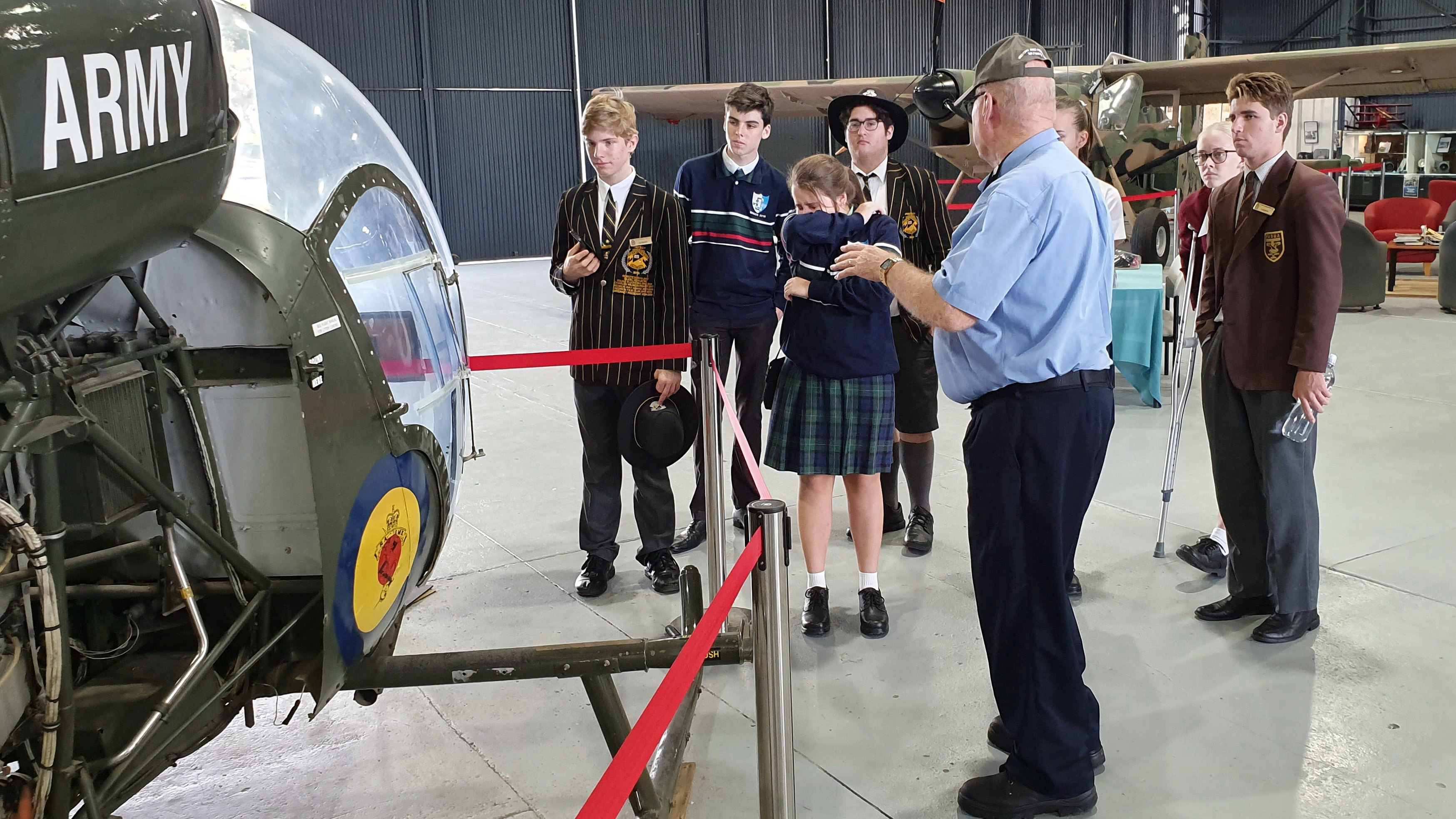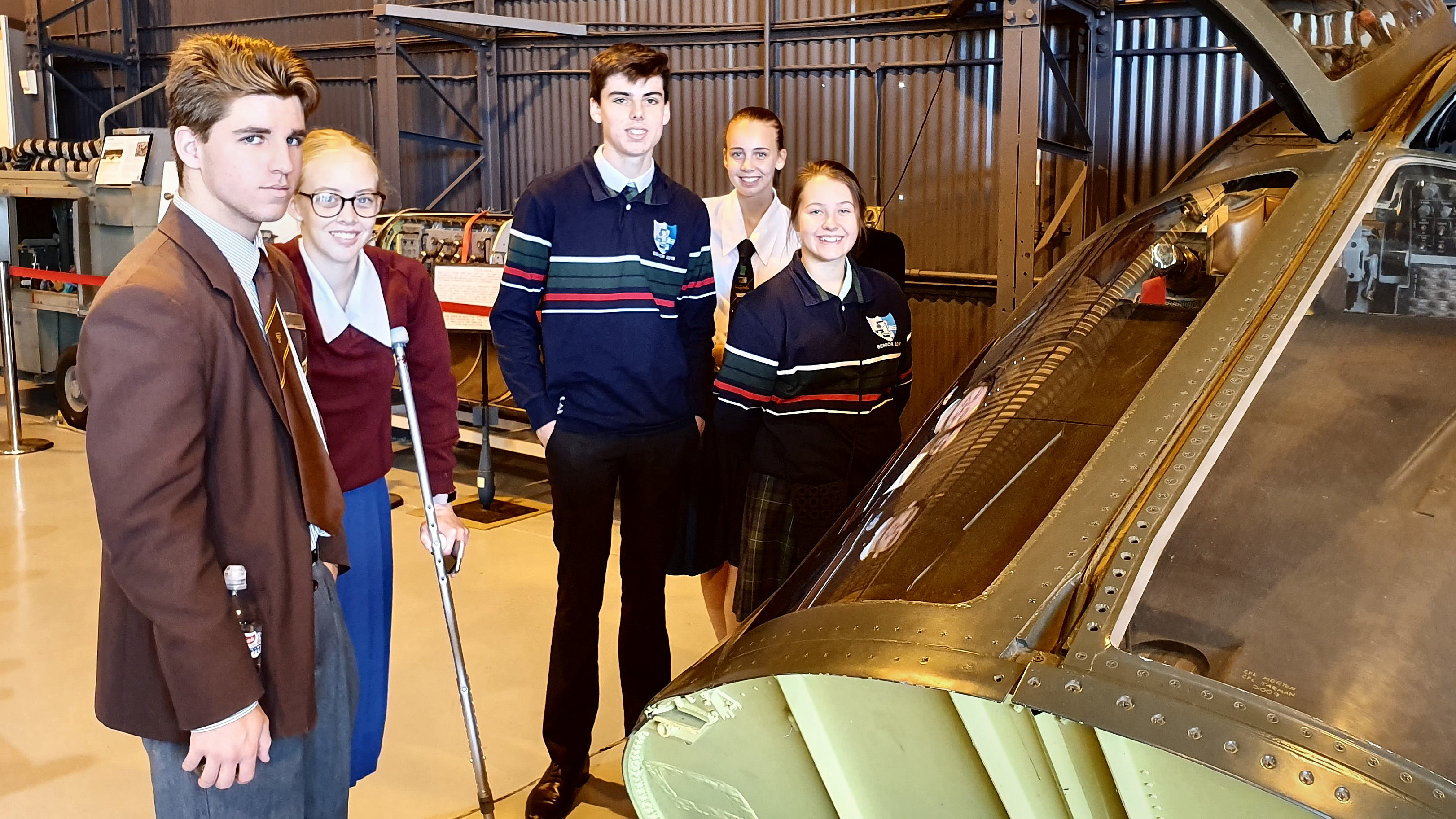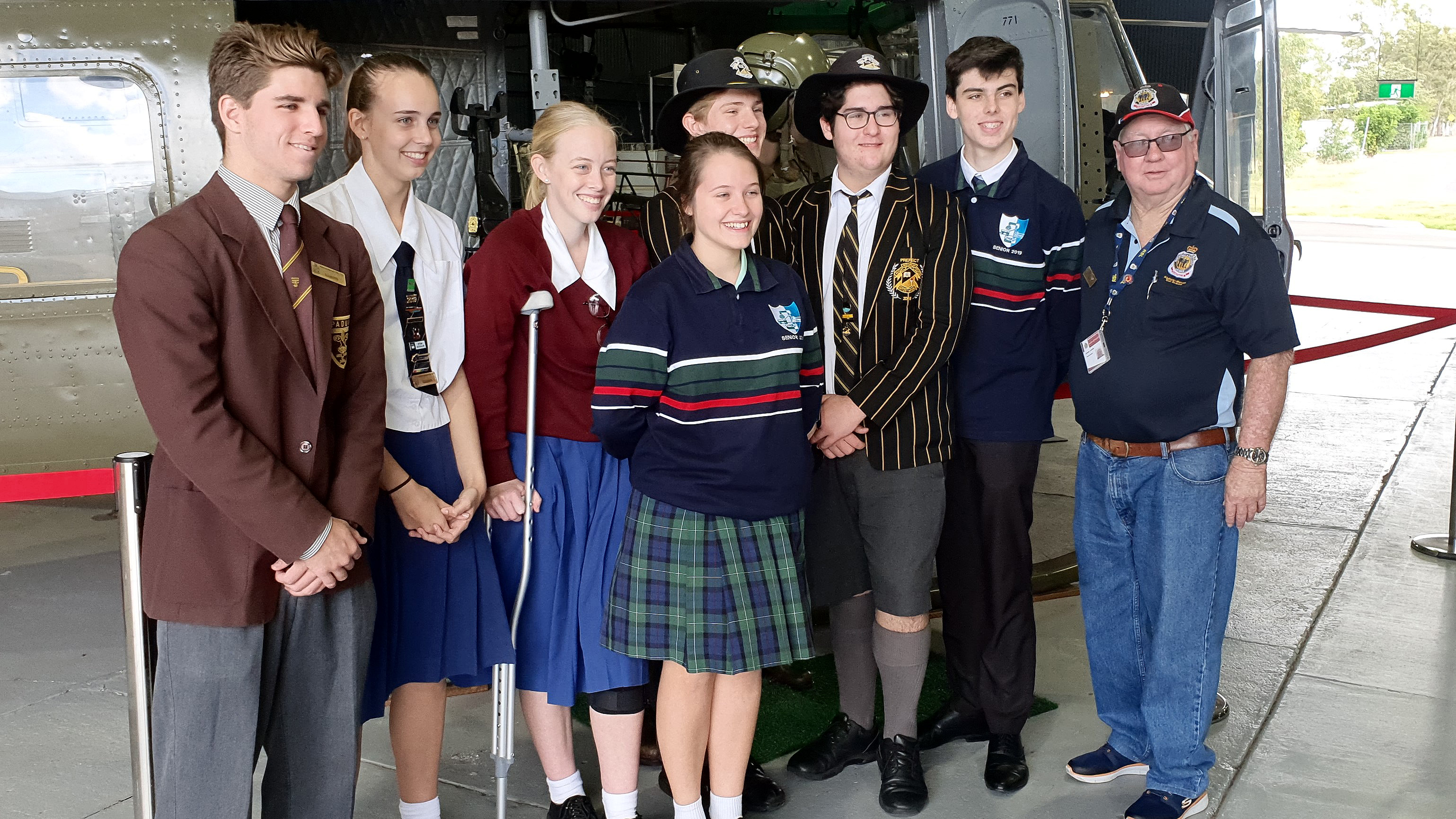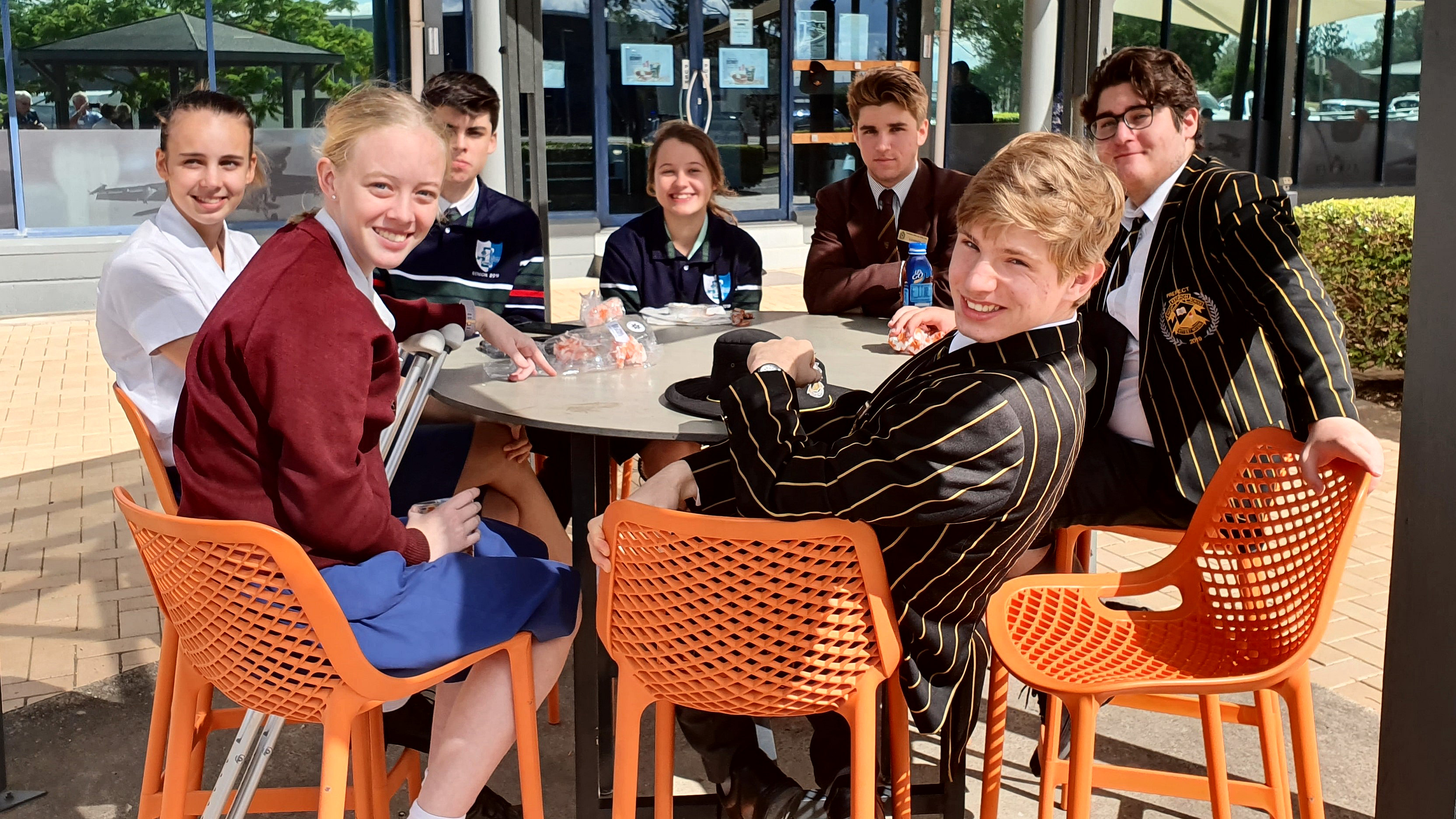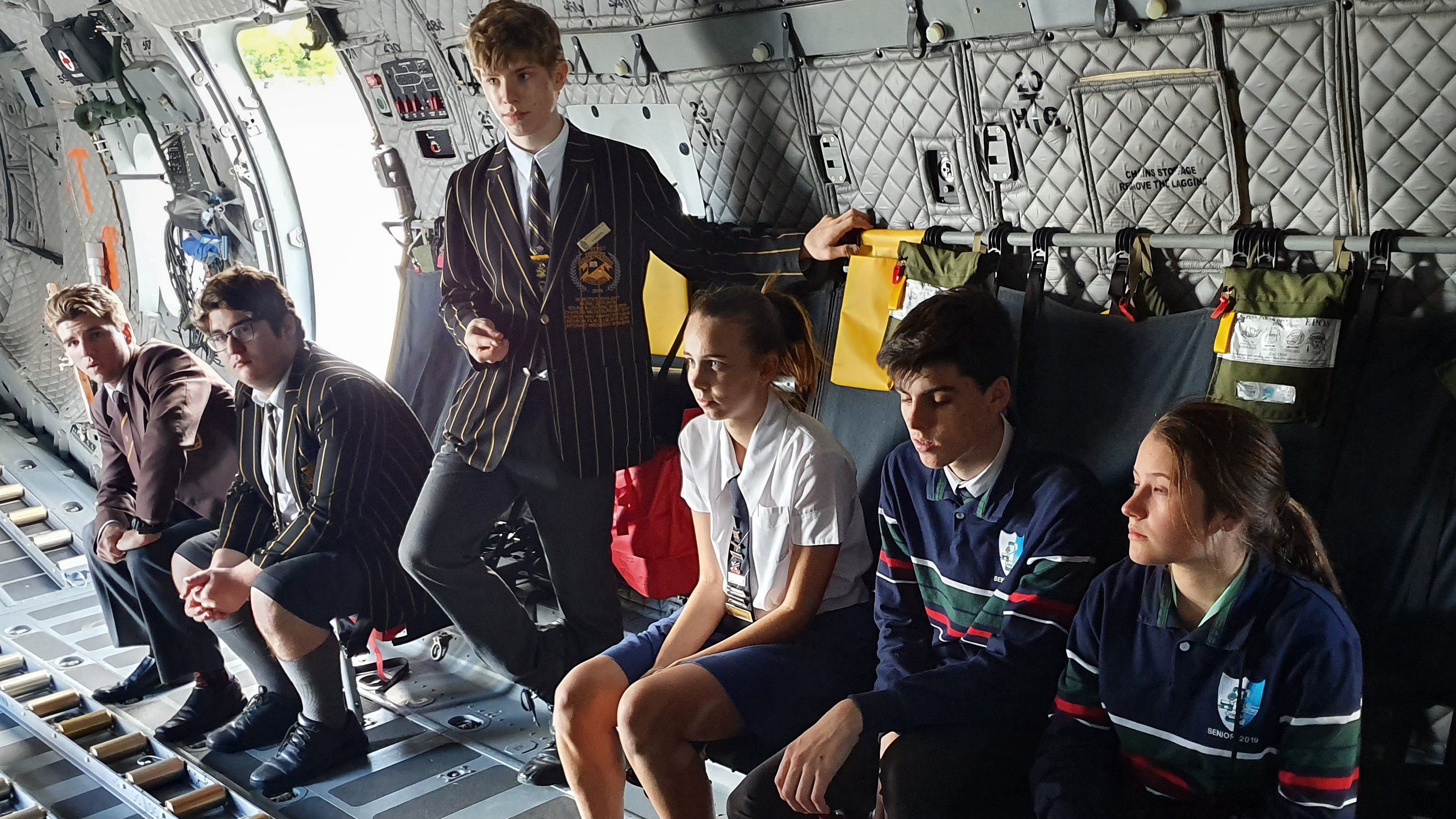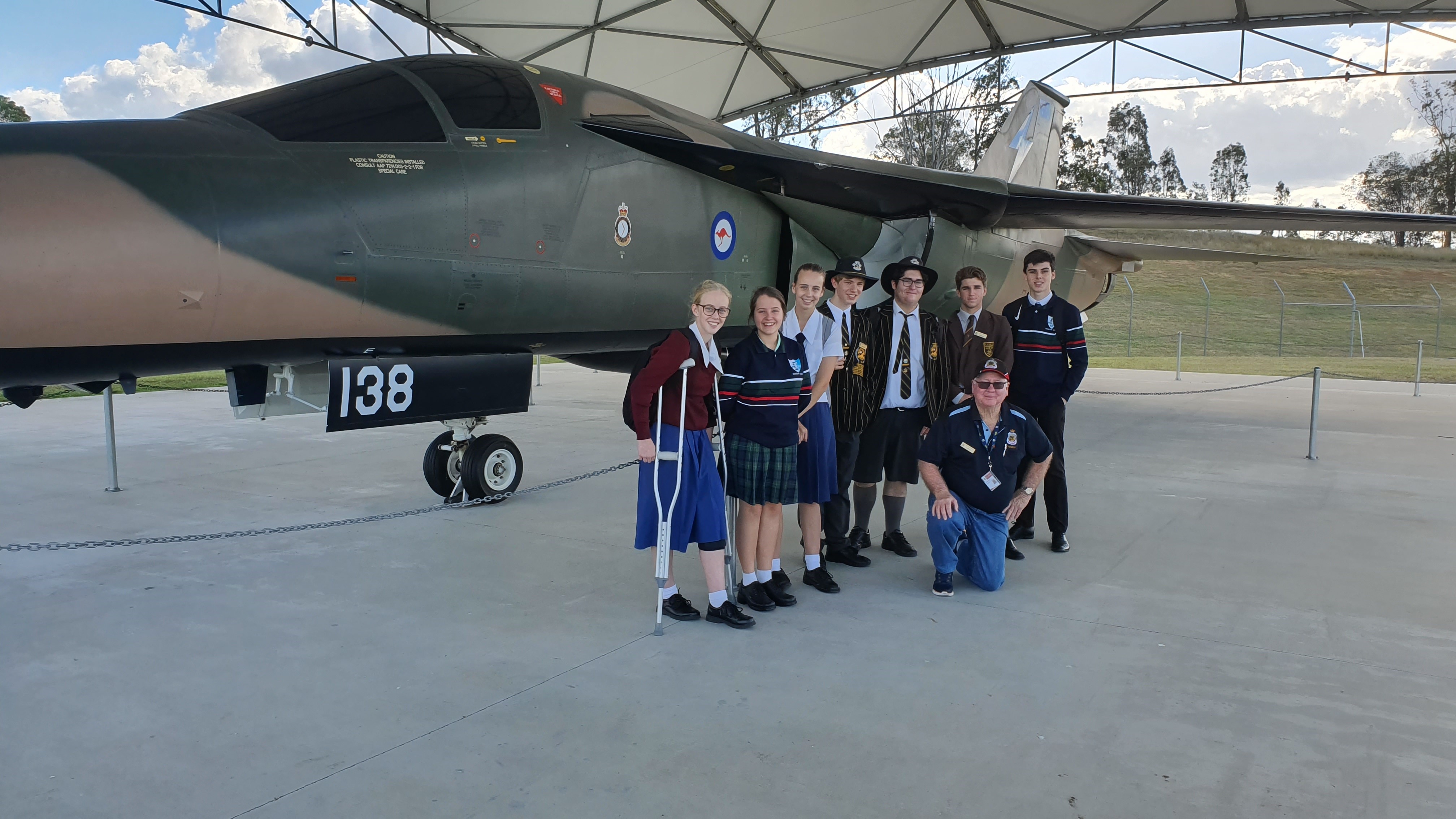|
|
||
|
||
|
Privacy Policy | Editorial Policy | Profit Policy | Join the Association | List of Members | Contact us | Index | Links |
||
|
Back Go to page: 1 2 3 4 5 6 7 8 9 10 11 12 13 14 15 16 17 18 19 20 Forward
|
||
|
Contents:
|
||
|
Pedro’s Patter.
Excerpt from Jeff’s book – Wallaby Airlines.
June – July 1967
One morning in June I woke up and realised I had only six weeks to go. It was the first time I had counted in weeks instead of days. The interval seemed tangible. I realised that only one more group of people would depart before I too would be leaving. For the first time since the early days I felt nervous. What if something happened to me with such a short time left?
In late June I wrote home:
|
||
|
I might be leaving Vietnam at a good time. In the last month or so things have been hotting up considerably, especially up north. There was plenty evidence of this on the last detachment. Several places we regularly go into while on detachment have been mortared in the last 3–4 weeks. One American Caribou pilot was telling me he was halfway through unloading at one place when the mortar shells started arriving. He quickly started up and departed post haste while he still had a whole aeroplane. So far nothing like that has happened to me, thank Goodness.
|
||
|
I started thinking past Vietnam. When my tour finished, how would I feel out of this Asian-American military environment which had become a way of life? Would I settle down to a normal existence again away from the Villa, Vung Tau, Nha Trang and 100 plus action-packed flying hours a month?
There were other indications that my tour was drawing to a close. One
example was the tone of Robyn’s letters. I could tell that she felt some
sort of a landmark had been passed. We began to talk more about what we were
going to do when I came home, making plans that we had not had time to
Our pilot friend pointedly mentioned very generous terms of employment should any of us decide to return to Vietnam and work for his outfit. Fat chance he had. It was bad enough operating our Caribous into minimal strips by day in Vietnam. We had heard theirs went into the same sort of strips in Laos and Cambodia by night, using truck headlights as runway markers, on clandestine missions without even the ‘protection’ of military markings. The job specification also included a requirement for pilots to be proficient at handling firearms.‘Thanks, but no thanks’, was my response.
Although I was alert for trouble, a few incidents in these last few weeks seemed to be testing my resolve to stay out of it. One day, Stew Mac and I were lined up for take-off on the east-west runway at Vung Tau. This runway, being only 2000-foot long and of substandard PSP construction, was rarely used. But at this time of year, strong easterlies were common as the afternoon sea breeze came in.
|
||
|
|
||
|
Fortunately, on this occasion, I ran the engines up to almost full power on the brakes as the Tower Controller cleared us for take-off. Just as I rotated for lift-off, a US Army ‘Huey’ darted across the runway directly in our path. I yanked savagely on the control column. The chopper disappeared under our nose, and we did not stall. Hearts pounding, we continued on our way.
Many of our flying habits in Vietnam were conditioned by the environment in which we found ourselves and were quite different to those we adopted back home. One example of this was the preference of most pilots for visual flying whenever possible rather than flying in cloud. I mentioned this to a recently arrived pilot, explaining that the flight following agencies provided only an advisory service, and many pilots flew around without reference to the flight follow agency in very marginal weather conditions. This particular pilot, who had flown in the US and Britain under radar control, found this hard to accept. His attitude changed one day however, when we popped out of cloud in the middle of a handover between Paris and Paddy Controls on a collision course with an Otter.
With the monsoon back in the Delta, I was talking to another new pilot about flying techniques when forced to fly low due to weather. I mentioned the ‘ultra-low and fast’ technique which everybody used (there was no official squadron technique) and my own experiences. Some time later, this same pilot was caught out in bad weather and flew into an airfield in the Delta at the ‘regulation’ 200 feet above ground level. The aircraft was raked by ground fire, with eight hits from nose to tail. One passenger was killed, and one seriously wounded. It was not entirely the pilot’s fault, he was only following normal procedure. In this environment, however, one sometimes had to ignore the rules and rely on one’s own judgment. As I looked at the bullet-scarred Wallaby, I felt a slight twinge in my stomach, and sorry for the unfortunate passenger who did not make it that day.
Back on detachment in late June with Alan Aiken, we found there was an apparently unlimited supply of cows for Duc Xuyen and ammo, POL and rice for Dak Pek, Plei Me, Dak To and some new places like Ban Me Thuot. The city of Ban Me Thuot was a crossroads town in the central highlands and its largest city. When it was overrun in 1975, its strategic position threatened the larger centres of Pleiku and Kontum further north. Its capture effectively split Danang in the north from Saigon, leading to the eventual overrunning of those cities and hastening the downfall of the regime in the South. Back then, Ban Me Thuot was a poor-looking town from the air and sat in the middle of a windswept plateau surrounded by distant hills. There were two airfields here, Ban Me Thuot City and Ban Me Thuot East.
|
||
|
|
||
|
Coming into Ban Me Thuot City, we had a funny experience. From about five miles out, a thin belt of cloud covered the airfield and the surrounding area. There were no other aircraft in the vicinity and we could see the city. We decided to descend under the cloud to make a visual approach. We advised our intentions to the Tower, which said, in a Vietnamese voice: ‘Wallaby Zero One, make ADF approach, report visual’. For the next five minutes, we tried to get across the idea that we were already visual and could remain visual under the cloud. Each time, the voice replied: ‘Make ADF approach, report visual’. Finally, in desperation and since we were the only aircraft in the area, we ignored the voice and made a visual approach. Over the airfield, and in clear view of the control tower, we reported: ‘Wallaby Zero One, visual, joining the circuit’. We were amazed to hear: ‘Wallaby Zero One, make ADF approach, report visual’. To this day, I am not sure whether on that day we heard a continuous tape playing only one message or a harassed Vietnamese learning English air traffic control (ATC) phrases one by one out of a manual.
Late on the third day we were sent up to Plei Me with pallets of ammunition. The place seemed deserted except for a handful of bleary-eyed individuals who came out to meet us. In their words, there had been a tremendous ‘drunk’ the night before—maybe they were practising for Independence Day—and they told us that everyone else was ‘bombed out’ in their ‘hooches’. There had also been a huge shoot-out using just about every weapon they had in the place, and they were almost cleaned out of ammunition. Piles of beer cans were arranged in rows at the side of the strip. ‘C’mon Aussie’, drawled the sergeant who was telling me all about it, ‘What you wanna try—M16, grease gun, 36 bazooka?’
One of his friends was busy loading an anti-tank gun. It went off with an ear-shattering roar, pulverising a pile of beer cans. ‘No thanks, we’ve got to get back’, I lied, anxious to fire up the Caribou and get the hell out of this madhouse.
Back at Vung Tau there were some Australian newspapers waiting for me with the mail. I had told my family several times not to believe any forecast on the length of the war or the morale or success of either side that they read in the papers. It was pretty obvious to us that some newspaper reporting in Vietnam was a sham. Many correspondents wrote their stories in the bar, rarely getting out of Saigon, relying on hearsay and knowing little of the true state of affairs. There were some genuine correspondents, usually with military connections. One came with us on a couple of trips.
Another thing that indicated my time here was running out was my attitude to food. While I could never enjoy ham steaks and lima beans, I had grown to like the mess’ sickly, gooey chocolate-flavoured homogenised milk, which had seemed revolting when I first arrived. I became so used to it that when one of our C-130 pilot friends from Richmond brought us up several gallons of fresh milk, I thought it tasted peculiar. He also brought a carton of meat pies, which tasted marvellous, even when we could not resist eating the first few pies cold down at the squadron crew room.
We received all sorts of goodies via the C-130 courier. Robyn, who lived at
Richmond township near the base, even baked me an apple pie and sent it up.
It was baked Friday and arrived Monday. Unfortunately, due to the humidity
it was covered in green mould by the time it got to me. But I appreciated
the thought. Next time she sent cakes and biscuits. I was now well used to
the delicious local bread. The art of baking French bread sticks was one
positive contribution to Vietnamese culture made by the former colonial
masters. These days, though, the flour was weevilly. At first, I used to
We ate these delicacies at a little back beach restaurant built out of flattened kerosene tins and run by a shifty-looking Vietnamese and his wife. With such a short time to go, I did decide it was smart to check health and hygiene reports before patronising the local restaurants. Apart from a dose of the ‘trots’ in my first few weeks here, I had been relatively immune from gastro upsets.
Some people suffered more than others did. One poor bloke got dysentery every time he ate or drank anything. I mentioned previously his problem on the high-speed taxiway at Tan Son Nhut. On another occasion he scared me half to death when I came in late at night, opened the toilet door and found him sitting there stark naked, fast asleep. By way of contrast, one of the other pilots must have had a stomach made of cast iron. Legend had it that he had been to the Sergeants Mess for a few convivial drinks after dinner and on his way back to the Villa felt rather ill. Fortunately, a storm drain was nearby, and he walked over and spent a few minutes contemplating its construction. Back at the Villa, he discovered that his dental plate was missing. With a flash of inspiration, he retraced his steps to the very spot where he had stopped at the drain, found his teeth, dusted them off and popped them back into his mouth!
Even the squalor surrounding the Villa became almost second nature. The kids who hung around outside the Villa all looked healthy and well fed and all Vietnamese, including our servants, seemed to have a fetish on personal cleanliness. But their habits with food, garbage and sanitation were not so hygienic. As a result, rats roamed around unchecked. Amazing as it seems, you could even get used to rats. During another routine game of mah-jong in the Villa, a huge rat appeared and ran along the ledge on the wall. Once, revolted to the point of nausea, I would have rushed at it with whatever heavy object came to hand. This time, neither I nor anyone in the group even looked up.
Early in July, the squadron suffered another misfortune. The 405 mission Wallaby, captained by my friend Ian Baldwin, came to grief at Dalat. The taxiway from the runway to the parking area was very narrow and crossed a deep drain. Taxiing near its edge to avoid parked aircraft, the right main wheels had caused the shoulder of the culvert to collapse. The Caribou slewed around, the right main gear folding back under the wing and came to rest on the wingtip. The result was almost as bad as the Ba To prang but the repair operation was a little easier since Dalat was secure and accessible.
Special air bags were also now available to raise the aircraft for temporary repairs. I flew up to Cam Ranh Bay next day to get the bags. The Wallaby looked rather sad with one wing up in the air and one in the mud but only a few days after the incident it was ready to be flown back to Vung Tau, undercarriage chained down as at Ba To, for permanent repairs. The maintenance team had triumphed again. And of course they had to. We had a total of seven aircraft in the squadron, and invariably had five serviceable and available for our various tasks, sufficient to allow a flying rate of some 12,000 hours per year for the fleet. We were proud of the fact that none of the USAF squadrons matched this performance and while we patched up our battered Wallabies, a total of around 70 American Caribous was depleted by accidents since their damaged aircraft were rarely recovered.
During the various shuttles into Dalat with bits for the aircraft, I had an opportunity to look around this beautiful mountain-top city. Evergreen shrubs and attractive gardens flourished in this temperate environment. In some ways the city was more like a park. Vegetables grew well here and found their way to our local market. Dalat had a quiet, non-military appearance quite unlike that of any other Vietnamese city, with fine public buildings and well-designed private houses. There were no shanties here. The plaza, monuments and courtyards were more European than Asian. For many years well-to-do French, and later Vietnamese, had come here to escape the sticky Saigon summers.
Even the market had an air of sophistication lacking in other cities. Montagnard women in traditional dress plied their wares. A brilliant multi-coloured woven cotton mat caught my eye. I pictured it hanging on a wall at home, like a tapestry. When I found out the price, my decision to buy was easy.
This was my last downtown adventure in Vietnam, except for the occasional dining out at Vung Tau. There had been several terrorist incidents in the cities recently and bombings had occurred in Saigon. Having only a few weeks to go, I was not about to expose myself to unnecessary risks.
With this new-found survival instinct, I looked forward with some trepidation to my final Nha Trang detachment. I even thought of taking my flak jacket, which had lain unused in the bottom of my wardrobe since my first week here but decided it would look too ridiculous after all this time. Besides, it weighed a ton. Anyhow, the pilots’ seats in the Caribou were armour-plated.
The north-east monsoon was long over. Nha Trang was as beautiful as ever, basking in the sun, the bay gleaming sapphire blue and the Buddha presiding serenely over the landscape. I could not imagine it any other way. Stew McAlister was with me again and we had brought our padre, Norm Lawless, along as supernumerary. We had come coastal, direct from Vung Tau, leaving late in the afternoon due to engine trouble.
|
||
|
|
||
|
The Palace Hotel in Dalat – one of the world’s great hotels.
|
||
|
Vung Tau south of the ranges was again in the grip of the south-east monsoon. Torrential evening rains, lashing the exposed aircraft, had saturated the engine electrical system, causing backfiring at high power. After a frustrating day, we had finally got away. Our frustration was not over. The next day, after one run to Ban Me Thuot, we taxied out with a full load again, but had to abort the take-off when the left engine started backfiring. Stew Bonett was again the crew chief, as he had been when I last had engine problems, but this time we were more fortunate. After changing the high-tension leads, the Wallaby ran normally again. Next day we were given two loads for Duc Lap. I was not enthusiastic about revisiting this camp, as I had no desire to go anywhere near the border at this stage. However, Duc Lap had changed from the barely inhabited overgrown strip I had seen back in October to a busy-looking outpost, with POL and other supplies at hand to mount helicopter operations. The strip was cleared of lantana, and vehicles moved along the roads outside the camp. We had no trouble finding it this time, and got in and out without any fuss.
Next morning we set off for Plei Djerang, the artillery base 20 miles west of Pleiku, with a load of mortar bombs and artillery shells. It was Stew’s leg, and he looked across quizzically as I unfolded a set of army grid maps. For the last month or so I had been twitchy about artillery. The Aerodrome Directory contained the following general warning about artillery:
PILOTS FLYING OVER SOUTH VIETNAM ARE ADVISED THAT ARTILLERY FIRE SHOULD BE EXPECTED.
The majority of light and medium artillery fire is below 7,000 ft AGL (above ground level). When possible in accordance with tactical mission, aircraft should operate above 7,000 ft AGL to reduce hazard. Air traffic will be furnished warning information regarding pre-planned heavy artillery fire by air traffic control and flight follow facilities. Advisories concerning no notice heavy artillery fires will be furnished as available on enroute and guard frequencies. (May 1967).
One might ask what was the difference between light, medium and heavy
artillery. For example, was a battleship off the coast firing at inland
targets
I told a few people at the squadron about my discovery, but got blank stares. I do not think they comprehended its significance, so nothing was done. I decided to take my own precautions and acquired a set of army grid maps and a list of artillery control frequencies to take on each trip. From then on, I made sure I at least knew what was going on and, if possible, stayed out of the way. In this case we had been given a local artillery control frequency. I fished out the correct map for the Plei Djerang area to match coordinates.
Stew was quite interested and the padre leaned over our shoulders in anticipation. The air-ground agency was called ‘Coyote’. I pressed the transmit button. ‘Coyote, this is Wallaby Zero One. We have a load of ammo for you.’ We did not need coordinates. In the distance we could see the flash of artillery fire. A 175mm piece was in position on the eastern side of the strip, firing right across it to the west. The question in my mind was, would the firing stop for our arrival? ‘Come on in, Wallaby’, drawled an American voice. ‘We’ll hold fire for your landing’. That sounded comforting, but the firing went on at intervals of about 30 seconds. Each time there was a tremendous flash and roar. The ballistic shell sped on its way; up to 25 miles we had been told. Smoke drifted in the light breeze. About a mile from the strip, after yet another round, I sought assurances. The voice sounded convincing, and there was a pause in the firing. We were a few feet off the ground, about to touch down, when there was a deafening explosion. The Caribou seemed to leap into the air, whether due to an instinctive twitch on the controls by Stew or because of a shock wave from the shell I was not sure.‘ Jesus Christ!’ exclaimed the padre spontaneously. Stew’s red face showed he was as mad as hell. I was not too impressed either. The artillery had fired off a round directly behind us. How well controlled this all was I could never be sure, especially after the recent antics at Plei Me. I might be accused of dramatising a fairly routine situation. Routine or not, I did not enjoy the experience.
About a month after I returned to Australia, I had a fleeting nightmare vision. As I opened the newspaper one morning I saw a photo of two halves of a USAF Caribou falling out of the sky after taking a direct hit from American artillery. The front half was falling vertically, propellers still turning. The last thing the crew would have seen was a windscreen full of the terrain they were about to smash into. At the ramp, the artillery officer explained that his crew had a contact and were reluctant to stop firing for too long. But we were not sure how good his judgment was as he was sitting in a jeep with a radio at some distance from the artillery and nowhere near the strip. He could see we were unhappy, so he agreed to give us more time to get on the ground in future. Thanks a lot, I thought.
We did two more runs to Plei Djerang that day and another to nearby Chu Dron. Both were in full swing, pounding away at targets to the west. But we received more consideration now as we joined the circuit. After all, we were bringing in their ammunition. On our last run we were asked to stop by Pleiku to pick up some passengers for An Khe. As we taxied out at Pleiku, a VNAF Skyraider joined the circuit with a ‘hang up’ (unreleased bomb). We were taxiing east along the parallel taxiway as the Skyraider landed towards us on runway 27 (to the west). Suddenly the ‘hang up’, a 250-pound iron bomb, shook loose from the wing and bounced in our direction like a rubber ball. My frozen fascination lasted only a second. We were soon taxiing at near flying speed out of harm’s way. The wayward weapon evidently stopped somewhere behind us, intact, and we were happy to leave Pleiku in one piece before the last act of this minor drama.
Thirty minutes out of An Khe, more trouble. Our port engine fire warning lights began faintly glowing. Now according to the aircraft flight manual, the engine should be shut down. But I had had an engine fire before and had seen the lights. They do not faintly glow. They come hard on, bright red. I had also had several instances of faulty fire warnings on start up back at Vung Tau, after heavy overnight rains. It was a moisture problem again. In spite of what the aircraft manual said, Stew Mac and I agreed it was appropriate to continue to An Khe with the engine running. On the ground we confirmed there had been no fire, and decided it was safe to return to Nha Trang for repairs. It was dark by the time we got there. I was so tired I did not even wake up during a bunker alert in the middle of the night. We spent the next two days grounded with the aircraft unserviceable. It was a dreadful detachment, the upside being we were not exposed to any danger. Stew Bonett never said so but I am sure he thought I really was jinxed. Whenever a detachment aircraft had engine trouble, he and I seemed to be on it. On the morning of the third day, with his usual enthusiasm and professionalism, he had the fire warning system in bits. He again enlisted our help as apprentice mechanics. We fixed the problem, and by ten o’clock were ready for a couple of shuttles to finish the detachment.
That night out of my window I could see flares being shot off towards the nearby hills. This had been a nightly occurrence since, about two months ago, some VC crept onto the airfield and blew up half a dozen helicopters. The flares made it bright as day, so if they let them off every now and then I presumed it would be hard for anyone to sneak down onto the airfield. I hoped so anyway. In spite of our troubles and my intention to take it easy on my last detachment, we had still logged a respectable total of over 35 hours in the six days. Stew Mac and I changed seats at Gia Nghia on the way back to Vung Tau. As we sat there, motors running, waiting for the signal that passengers and mail were unloaded, I stared blankly at the scene outside.
For some reason, I can still remember my last look at this windswept excuse for a runway, its dumbbell strip a red scar among the green hills, its camp clinging to the mountainside a couple of hundred feet below. On a ridgeline beside the strip, a platoon of Montagnard soldiers, rifles slung carelessly over their shoulders strode along in single file. They picked their way down the side of the hill, going I know not where. This seemed so characteristic of my time in Vietnam. Everyone was busy at something but no one was really sure what the others were doing, and why. No doubt some general had the big picture.
Four days later I was checking out a new ‘bog rat’ on the 406, but my heart was not in it. A week later, I barely glanced out the window as the Boeing climbed out over the Delta. I settled back in the comfortable airline seat, sipping scotch and soda and thought about absolutely nothing.
The last 12 months was already turning into a strange dream.
|
||
|
Paddy Says to Mick, “I’ve got something’ stuck in me throat and I can’t breathe properly.” Mick Says, “Parrdy are ye choking?” Paddy replies, “No I’m deadly serious.
|
||
|
Click HERE to print out this story.
|
||
|
|
||
|
The Kedron Wavell RSL Sub-Branch has, for many years, taken a number of local High Schools under its wing and provided students from the schools with financial support and backing in a variety of ways.
Over the years many students, singularly and in groups, have had their sporting needs subsidised, had sporting and ceremonial excursions fully funded, both interstate and on occasions overseas, had clothing provided and been escorted to many and varied functions.
The schools are Padua College, Kedron State High, Craigslea State High, Wavell State High and Mount Alvernia College and each school provides liaison students from year 12, who attend the monthly meetings of the Sub-Branch and bring everyone up to date with school events. It’s a wonderful initiative of the Sub-Branch and is the envy of all other Sub-Branches.
On Thursday the 16th May, John Lunn, the Sub-Branch’s assistant school liaison officer (John is an Ex-Framie from 12 Sqn – takes the RAAF to organise things) arranged, for a number of the liaison students, a tour of the Aviation Heritage Centre and 35 Squadron’s facilities and aircraft (at Amberley).
Unfortunately, due to the Naplan (National Assessment Program — Literacy and Numeracy) tests that were being held at all schools in Queensland at that time, a few of the students had to pull out at the last minute, but the 7 that did come enjoyed the experience and the ADF look like gaining one as a recruit in the near future.
Several Sub-Branch members were “volunteered” to accompany the students, to act as mentors and to answer any questions they might have. Everyone assembled at the Kedron Wavell Ex-Servicemen’s Club at about 8.00am for an 8.30am departure. The Sub-Branch made available two of their 12 seater buses and with everyone one loaded it was off to Amberley.
|
||
|
Paddy thought his new girlfriend might be the one but after looking through her knicker drawer and finding a nurse’s outfit, a French maid’s outfit and a police woman’s uniform he finally decided “If she can’t hold down a job she’s not for me"
|
||
|
|
||
|
L-R: Andreas Siasios (Kedron State High), William Pembroke (Padua College), Samuel Malone (Kedron State High), Maggie-May Hornigold (Wavell State High), Emily Morley (Wavell State High), Eloise Pean (Craigslea State High), Cooper Maher (Craigslea State High), John Lunn. About to board the bus.
|
||
|
After being met at the front gate at Amberley, and having names checked off, it was onto one of the RAAF’s 22 seat buses for the drive to the Heritage Centre where volunteer staff were on hand to show everyone around.
|
||
|
|
||
|
One of the Centre’s immaculately presented exhibits - the little Bell 47.
|
||
|
|
||
|
Checking out the F-111 escape module.
|
||
|
|
||
|
With the famous Vietnam War workhorse - a troop transport, "dust-off" chopper, gun-ship, supply vehicle and search and rescue machine, the Bell Iroquois.
|
||
|
|
||
|
After an hour or so at the Heritage Centre, it was lunch time and being young, fit and healthy, the students were in dire need of a refuel, so it was off to the AAFCANS café (successor to ASCO) for lunch, after which it was back onto the 22 seater for a windscreen tour of the Base.
|
||
|
Wing Commander Ben Poxon, the CO of 35 Sqn, had graciously agreed to allow
the students a tour of his facilities and aircraft and after a look through
the hangars and seeing one of the Squadron’s C-27 Spartans under deep
maintenance, it was out onto the tarmac and a chance
This was a bit of a shock for the students as their experience with aircraft so far had been restricted to the nice, quiet shiny comfortable ones operated by Qantas, Virgin etc. They think they now know why the RAAF called this particular one the Spartan – as, compared to what they were used to, it certainly was. A complete lack of carpet, instead trip-hazard runners on the floor, side-saddle seating, no nice little windows to look out while aloft, no in-flight entertainment, no where to stow their carry-on luggage. It was a huge shock!
But, once they were shown all the bits and pieces and instructed on their use, it all made sense. If given the opportunity, all would gladly give up their next flight in a 737 for the experience of a trip in the Spartan.
|
||
|
|
||
|
Then, as 3.00pm approached, it was time to head home again, it was one last look over the mighty F-111 at the main gate, then onto the buses and back to the Club.
|
||
|
I went for a run but came back home after 2 minutes because I forgot something. I forgot that I’m fat and can’t run for more than 2 minutes.
|
||
|
|
||
|
|
||
|
|
||
|
Back Go to page: 1 2 3 4 5 6 7 8 9 10 11 12 13 14 15 16 17 18 19 20 Forward |
||
|
|


%20William%20Pembroke%20(%20Padua%20College%20)%20Samuel%20Malone%20(%20Kedron%20State%20High%20)%20Maggie-May%20Hornigold%20(%20Wavell%20State%20High%20)%20Emily%20Morley%20(Wavelle%20State%20High%20)%20Elois.jpg)
